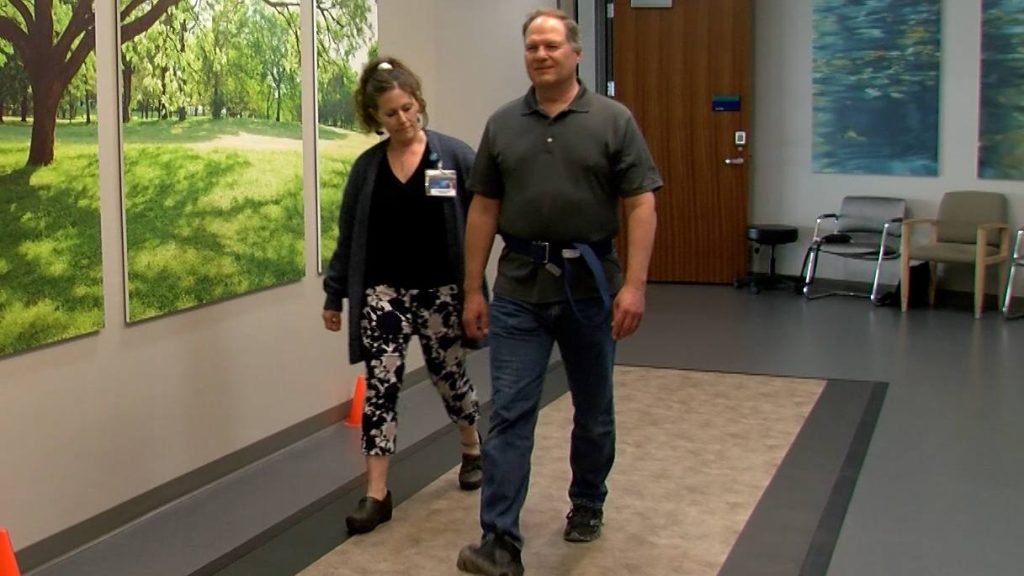Editor’s note: June is Alzheimer’s and Brain Awareness Month
How does your gait — or how you walk — relate to your brain health? Considerably, says Dr. Farwa Ali, a Mayo Clinic neurologist who specializes in movement disorders. Assessing a person’s gait can offer insight into various brain health conditions. The hope is that early diagnosis of gait and balance problems will lead to better treatment and outcomes for patients with degenerative brain disorders. Dr. Ali explains how testing gait works and what it can tell clinicians.
Watch: The Mayo Clinic Minute
Journalists: Broadcast-quality video (0:57) is in the downloads at the end of this post. Please courtesy: “Mayo Clinic News Network.” Read the script.
Put one foot in front of the other. This simple gait test can tell a clinician a great deal, says Dr. Ali.
“How someone’s body is moving through space, what their balance looks like, what their joints are doing,” she explains.
Testing gait

The gait test can measure, for instance, how fast or slow a person walks compared to peers in their age group. It’s then analyzed to assess whether a neurological problem is already present.
“For example, someone with Parkinson’s disease, may walk slower, or with smaller steps and not move their arms enough,” says Dr. Ali.
Many neurodegenerative diseases affect gait and balance before diagnosis. She is hopeful about improving ways to measure and quantify these.
“We need more research, but my hope is to be able to detect gait abnormalities early and reliably, to augment clinical diagnosis and help clinicians detect patients with neurodegenerative disease earlier,” Dr. Ali says.
She adds that everyone is different, and it’s important to understand why a person might be having issues with their gait. Analyzing gait is one step in understanding a person’s brain health.
Related posts:
Related Articles



Neurology Patient Stories
